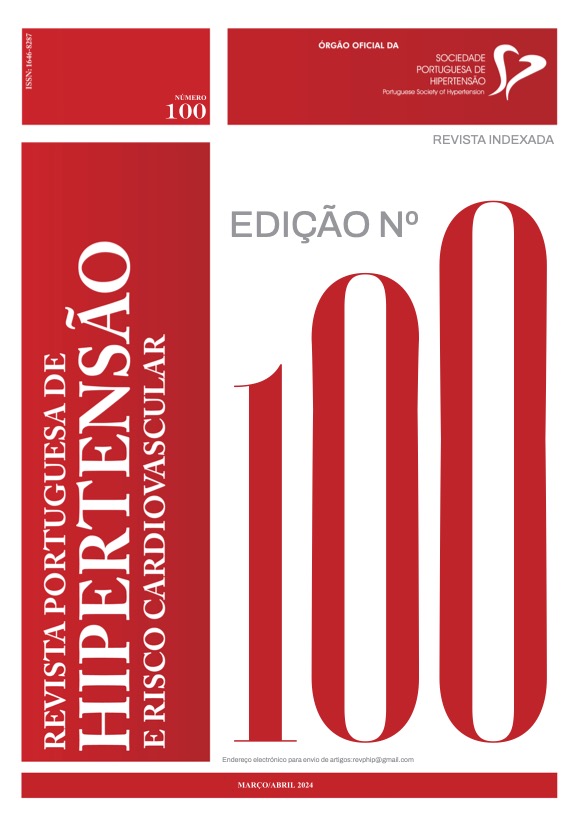DIAGNOSTIC APPROACH TO ARTERIAL HYPERTENSION OF SUSPECTED SECONDARY CAUSE IN PRIMARY HEALTH CARE - HYPERTENSION OF ENDOCRINE CAUSE
DOI:
https://doi.org/10.58043/rphrc.123Keywords:
hipertensão arterial secundária, hiperaldosteronismo primário, cuidados de saúde primários, rastreioAbstract
Endocrine diseases are frequent causes of secondary hypertension, and primary hyperaldosteronism is the most common endocrine cause of hypertension. Unlike other endocrine diseases, primary hyperaldosteronism has no typical phenotypic characteristics, and is often misdiagnosed as essential hypertension. It is, however, associated with much higher morbidity and mortality than essential hypertension. Targeted therapy for hyperaldosteronism allows for the cure or significant improvement of hypertension; therefore, its screening is currently recommended in most patients with suspicion of secondary hypertension, starting at the primary health care level. However, primary hyperaldosteronism continues to be screened in only a minority of patients with hypertension. Thus, it is essential to underline the importance of screening and to simplify its approach in clinical practice. To this end, we propose a simplified algorithm to increase the diagnosis and treatment of primary hyperaldosteronism in Portugal, and to reduce its negative impact on patients and health costs.
Downloads
References
Thomas RM, Ruel E, Shantavasinkul PC, Corsino L. Endocrine hypertension: An overview on the current etiopathogenesis and management options. World J Hypertens. 2015;5(2):14-27.
Mulatero P, Monticone S, Deinum J, Amar L, Prejbisz A, Zennaro MC, et al. Genetics, prevalence, screening and confirmation of primary aldosteronism: a position statement and consensus of the Working Group on Endocrine Hypertension of The European Society of Hypertension. J Hypertens. 2020;38(10):1919-28.
Rossi GP, Bisogni V, Bacca AV, Belfiore A, Cesari M, Concistrè A, et al. The 2020 Italian Society of Arterial Hypertension (SIIA) practical guidelines for the management of primary aldosteronism. Int J Cardiol Hypertens. 2020;5:100029.
Baudrand R, Guarda FJ, Fardella C, Hundemer G, Brown J, Williams G, et al. Continuum of Renin- Independent Aldosteronism in Normotension. Hypertension. 2017;69(5):950-6.
Brown JM, Robinson-Cohen C, Luque-Fernandez MA, Allison MA, Baudrand R, Ix JH, et al. The Spectrum of Subclinical Primary Aldosteronism and Incident Hypertension: A Cohort Study. Ann Intern Med. 2017;167(9):630-41.
Fernandes V, Silva T, Martins D, Gonçalves D, Almeida R, Monteiro A, et al. Hiperaldosteronismo primário: resultados do primeiro estudo multicêntrico português realizado pelo Grupo de Estudos de Tumores da Supra-Renal. Revista Portuguesa de Endocrinologia, Diabetes e Metabolismo2016.
Funder JW, Carey RM, Mantero F, Murad MH, Reincke M, Shibata H, et al. The Management of Primary Aldosteronism: Case Detection, Diagnosis, and Treatment: An Endocrine Society Clinical Practice Guideline. J Clin Endocrinol Metab. 2016;101(5):1889- 916.
Williams TA, Reincke M. MANAGEMENT OF ENDOCRINE DISEASE: Diagnosis and management of primary aldosteronism: the Endocrine Society guideline 2016 revisited. Eur J Endocrinol. 2018;179(1):R19-r29.
Reincke M, Bancos I, Mulatero P, Scholl UI, Stowasser M, Williams TA. Diagnosis and treatment of primary aldosteronism. Lancet Diabetes Endocrinol. 2021;9(12):876-92.
Young WF, Jr. Diagnosis and treatment of primary aldosteronism: practical clinical perspectives. J Intern Med. 2019;285(2):126-48.
Jędrusik P, Symonides B, Lewandowski J, Gaciong Z. The Effect of Antihypertensive Medications on Testing for Primary Aldosteronism. Front Pharmacol. 2021;12:684111.
Mulatero P, Sechi LA, Williams TA, Lenders JWM, Reincke M, Satoh F, et al. Subtype diagnosis, treatment, complications and outcomes of primary aldosteronism and future direction of research: a position statement and consensus of the Working Group on Endocrine Hypertension of the European Society of Hypertension. J Hypertens. 2020;38(10):1929-36.
Campbell DJ, Nussberger J, Stowasser M, Danser AH, Morganti A, Frandsen E, et al. Activity assays and immunoassays for plasma Renin and prorenin: information provided and precautions necessary for accurate measurement. Clin Chem. 2009;55(5):867-77.
Funder JW, Carey RM, Fardella C, Gomez-Sanchez CE, Mantero F, Stowasser M, et al. Case detection, diagnosis, and treatment of patients with primary aldosteronism: an endocrine society clinical practice guideline. J Clin Endocrinol Metab. 2008;93(9):3266-81.
Alnazer RM, Veldhuizen GP, Kroon AA, de Leeuw PW.The effect of medication on the aldosterone-to-renin ratio. A critical review of the literature. J Clin Hypertens (Greenwich).2021;23(2):208-14.
Downloads
Published
How to Cite
Issue
Section
License
Copyright (c) 2024 Ana Carreira, António Mateus-Pinheiro, Rita Silva, Miguel Melo, Vítor Coutinho-Teixeira, Rogério Ferreira

This work is licensed under a Creative Commons Attribution 4.0 International License.




